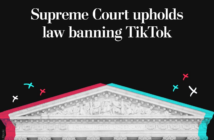Wells Fargo has been fined for fraudulent activity for its employees creating about 2 million fraudulent accounts, cheating their customers out of $20 million.
Wells Fargo admitted that there was illegal activity going on through a release of a statement on Sept. 8, admitting fault and apologizing for the creation of fraudulent accounts: “Wells Fargo is committed to putting our customers’ interests first 100 percent of the time, and we regret and take responsibility for any instances where customers may have received a product that they did not request.”
They are being fined from three government agencies, so far. The Consumer Financial Protection Bureau (CFPB) is one of these agencies and their $100 million dollar fine is “the largest penalty the CFPB has ever imposed,” according to CFPB Director Richard Cordray in a press release. Also, according to a report that the CFPB issued to customers who were affected, CFPB stated “The historic $100 million fine we imposed on Wells Fargo is in addition to the money the bank must pay back to harmed consumers.” The other government agencies who are fining Wells Fargo are Office of the Comptroller of the Currency and City and County of Los Angeles, who are penalizing the bank $50 million and $30 million respectively.
This adds up to $185 million that Wells Fargo has to pay in fines alone; however, this seems like merely pocket change for Wells Fargo. In fact, the company reported to earn $5.6 billion in the second quarter of 2016 alone and the company, according to Chicago Tribune, made a profit of “more than $20 billion in 2015.” On top of the profit bank is earning, the executives are already receiving hefty bonus payments.
The CEO of Wells Fargo, John Stumpf, is worth more than $200 million in Wells Fargo’s stock, according to Chicago Tribune. Another one of the executives who is receiving a lump sum is Carrie Tolstedt. She oversaw Wells Fargo during this fraudulence and announced her retirement earlier this year, and she is expected to be paid about $125 million as a “retirement package,” including thousands of shares of Wells Fargo stock, according to the Chicago Tribune.
However, for those seeking repercussions from Wells Fargo’s higher ups, there is talk about “clawing back” for Tolstedt’s millions in bonuses in particular, according to Dr. Ricky Scott, a professor in the Department of Accounting, Finance, and Economics. “Claw back” is essentially the recovery of funds already distributed, and the idea of “clawing back” was heavily suggested in the financial crisis due to business executives, who received millions dollars in funds, whose companies lost a significant amount of money or went bankrupt.
And for those desiring even bigger retribution for the company itself, the company is reportedly suffering from a drop of billions of dollars in market capitalization, probably due to the loss of trust from its customers. The bank was deemed “the highest valuable bank” with its market capitalization surpassing other banks in recent years because Wells Fargo was once reaching $300 billion in market capitalization in July 2015, according to the Wall Street Journal. However, as of Sept. 13, CNN Money reports that Wells Fargo, which, has dropped 6% in market gap to $237 billion, resulting in JP Morgan Chase bank surpassing Wells Fargo as the highest valuable bank. That drop in market cap is certainly costing the company; therefore, even though the fines and lawsuits may not harm Wells Fargo’s money, certainly the loss in business from customers will hurt it quite a bit as shown by the market cap.
“Banks need trust and they lost a lot of peoples’ trust, and this could be a long term bad effect,” said Scott about the situation of Wells Fargo.
This bank created so many fraudulent accounts without being detected until recently. However, once a spotlight was put onto the Wells Fargo, some may wonder what the aftermath for the customers and the employees may be.
“It’s going to have a huge impact but I don’t think we’re going to have many victims who lost more than a few hundred dollars. And of course they are getting that few hundred dollars back and then some,” Scott mentioned.
A senate hearing was set to be on Sept. 20 for Wells Fargo, according to Scott. Stumpf seemed to be the executive in the forefront of the hearing and seemed to avoid many of the questions asked by giving little explanation or no explanation at all when he answered. In fact, Fortune reports that “facing the Banking Committee, Stumpf was stumped by the most basic questions. How could this pattern of corrosive misconduct of two million unauthorized new customer accounts have continued over more than five years despite public reports? Why was the problem surfaced by The Los Angeles Times before internal discover? Why has there been no independent investigation?” The senate hearing, the fines and drop in market cap is among the many things that Wells Fargo has to face due to this scandal.
“Approximately 5,300 employees have been fired because they were opening accounts without permission from shareholders among other things,” said Scott. “Most of these people had preexisting accounts with Wells Fargo, say if they had a checking account and then they would open a home equity line or give them a credit card or open a savings account. Actually some of the people had minimum paying fees and going down minimum balance and that cost some people some money.”
“I did find out the first investigation was a local one in LA, three years ago. And so they really should have known, seems like to me. The managers should have said this is happening local let’s make sure this isn’t happening anywhere else but they didn’t do that.”
This illegal activity came about due to the large amount of pressure placed on the employees from the CEO down. According to Scott, this chain of pressure to increase sales goals started from the upper level and continues to the regional manager, then the lower level to the branch manager to the workers at the single branch. This pressure extended to incentives of getting bonuses if sales were increased and even went so far as to threaten to fire people if they did not reach the sales goal. In fact, according to Scott, “some of the managers were actually showing lower level people how to do this [engage in the fraudulent activity].”
“If you are compared to other branches [that]are cheating – well, if you don’t cheat, you’re going to be the low person, and you’re going to be the one that gets fired. It became kind of an epidemic. It’s kind of like baseball when the other players are using steroids and hitting 40 home runs and you’re not using steroids and hitting 25 homeruns; you’re going to end up on the bench.”
“From the CEO down, I think there is blame to go around… There were probably people who didn’t know this was [happening],” said Scott. “It really does go down to the individual employee; there were 5,300 employees that was pressure to do something they weren’t able to do: increase their sales to a certain level. That pressure should have been there, but on the other hand, there really is no excuse to doing something unethical or illegal. And so that 5,300 people deserved to get fired.”
Wells Fargo may seem like the only bank creating this overbearing sales goals for its employees; however, almost every other bank tries to get their customers to open new accounts from saving to checking to money equity and more. It’s called “relationship building,” according to Scott. In fact, many other banks have similar incentives that Wells Fargo has, encouraging employees to invite as many customers into having as many different accounts as possible. And this can be mutually beneficial for customers, avoiding to have multiple accounts in different banks, if done legally, of course.
“We believes Wells Fargo isn’t the only one doing this,” said Scott. “Certainty, the same incentive plans could result in this. Almost every other bank I am sure is taking a look at this to make sure this isn’t happening now. Wells Fargo, with the good reputation they had – if they were doing this, there’s a good chance other people were doing it too.”
Wells Fargo is certainly trying to find ways to prevent this fraudulent activity from ever happening again. In fact, Wells Fargo, according to their website, will end sales goals effective on Jan. 1 of 2017. This effort to end sales goals is probably an effort to gain favor of their customers and gain their trust again.
“Our objective has always been and continues to be to meet our customers’ financial needs and drive customer satisfaction,” said Stumpf, on the Wells Fargo story website. “We are eliminating product sales goals because we want to make certain our customers have full confidence that our retail bankers are always focused on the best interests of customers.”
Some may wonder if there is any other way to prevent this from happening at any other bank, especially for those banks that encourage its employee to relationship build and to push for their customers to open multiple accounts.
Regulations could possibly be tightened; however, this may prevent other banks from relationship building. “We want banks to try to sell their services but we don’t want this,” said Scott.
It is highly likely that some victims notified Wells Fargo to inform the bank that they had charges which were not incurred; however, the bank probably insisted that it was mistake. However, Scott suggested that a “simple solution” would be having a “whistle blower hotline.” This way if there is an incident and it occurs multiple times from the same bank, an investigation done can possibly be done.
However, according to Scott, even this solution can possibly be an issue because if every call received is investigated, the bank might actually make a mistake. Also, if resources were provided to investigate every incident, this would eat at tax-paying dollars. However, some people may think some type of regulation needs to be enforced. This hypothetical regulation could prevent other banks’ executives and managers from placing pressure onto employees to meet sales goals, thus preventing fraudulent activity as large as this from happening.
“Management created a situation where this could happen, but it couldn’t have happened unless the people chose to do something wrong and they knew it was wrong,” said Scott. “And that’s a valuable lesson for our students, I think, because, in the working world, sometimes you are pressured to do something wrong and you need to think about the consequences. I always urge people to the ethical thing and sometimes that might mean losing your job.”






